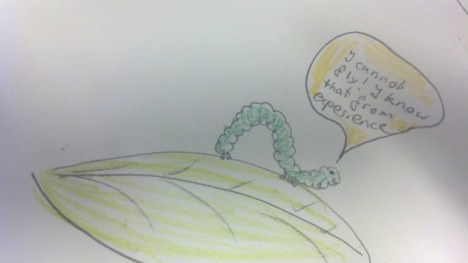It has become fashionable in job interviews to ask applicants about their greatest weakness. And it has become about as fashionable to answer: “Well, my biggest weakness is that I am a perfectionist.” And to go on explaining how this, obviously, is actually a strength, just hidden behind a humble face and the pretense of “yeah, it’s a weakness that I just can’t help always wanting everything to be perfect.” And who wouldn’t want a perfect employee, right?
Well, the more I work with perfectionnists, the more I realize that yes, indeed, this is a weakness – which might even become disabling to the perfectionnist and his or her colleagues. Don’t get me wrong, I am not saying we should all just chill and be mediocre. But I think being a good-enough-ist, a get-the-important-stuff-right-ist or a be-great-but-know-when-to-stop-ist can be much more productive, effective, and team compatible than a perfectionist.
Why? What is the problem with wanting everything to be perfect?
Well, it starts with the “everything”: If you need everything to be perfect, you can easily put as much energy, anguish and stress in a typo on the last page of the annex of a report as you put in the bigger picture issues. Which means you have problems prioritizing and, in the worst case, might run out of energy, time and resources before you get to the big issues.
And it continues with the notion of “perfect” in an imperfect world. It is common sense that you use 20% of the energy to finish a task to about 80% and the remaining 80% of the energy to get it to 100% perfection. That is a lot of energy used on incremental improvements. How much of this is really necessary? Well, that depends on what we are talking about (baking a birthday cake or open heart surgery?). But, as we have seen above, when “everything” has to be perfect, there is no way of knowing when the 100% perfection are actually needed and when a lower level is still absolutely fine.
But let me go one step further and just say it: Sometimes it is better not to be perfect! Yes, you have heard me: Sometimes a perfect product, performance or result is worse than an imperfect one. Why is that? Because perfection is a lonely state of affair. A perfect performance invites no-one, it says: “Don’t mess with this!” instead of “Come, let’s grow together!”. You have probably seen cakes that look so perfect you feel you can’t eat them, because that would mean destroying perfection – now, how perfect is that, a cake you wont eat…? So, in any situation where you are aiming at engaging others, thinking together, encouraging them to share, help and contribute (or eat the cake), a perfect presentations sends the message: “I am IT and you are my audience. Now be quiet and listen to my greatness.”
There is another risk in perfection. It encourages stagnation and the end of innovation. If, after all, this is the perfect thing, any change would make it less perfect. So, perfection is like a dead-end, a street leading nowhere but to this one beautiful house with all doors closed.
So, here’s to all the scribbling, speaking as you think, sharing before it is perfect, asking for help and getting stuff done together.
Filed under: career coaching, exploring new ideas, musings, personal development, Uncategorized | Tagged: Job Interviews, Perfectionism, personal development, Team Work | 2 Comments »

















